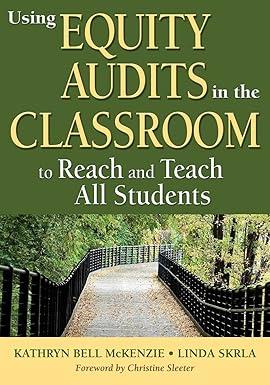Question
Bandar Industries Berhad of Malaysia manufactures sporting equipment. One of the companys products, a football helmet for the North American market, requires a special plastic.
| Bandar Industries Berhad of Malaysia manufactures sporting equipment. One of the companys products, a football helmet for the North American market, requires a special plastic. During the quarter ending June 30, the company manufactured 3,600 helmets, using 2,700 kilograms of plastic. The plastic cost the company $20,520. |
| According to the standard cost card, each helmet should require 0.68 kilograms of plastic, at a cost of $8.00 per kilogram. |
| Required: | |
| 1. | According to the standards, what cost for plastic should have been incurred to make 3,600 helmets? How much greater or less is this than the cost that was incurred? (Round Standard kilograms of plastic per helmet to 2 decimal places.) |
| 2. | Break down the difference computed in (1) above into a materials price variance and a materials quantity variance. (Round your actual materials price to two decimal places, and round your final answers to the nearest whole dollar. Indicate the effect of each variance by selecting "F" for favorable, "U" for unfavorable, and "None" for no effect (i.e., zero variance).) |
| SkyChefs, Inc., prepares in-flight meals for a number of major airlines. One of the companys products is grilled salmon in dill sauce with baby new potatoes and spring vegetables. During the most recent week, the company prepared 7,200 of these meals using 2,800 direct labor-hours. The company paid these direct labor workers a total of $22,400 for this work, or $8.00 per hour. |
| According to the standard cost card for this meal, it should require 0.40 direct labor-hours at a cost of $7.50 per hour. |
| Required: | |
| 1. | According to the standards, what direct labor cost should have been incurred to prepare 7,200 meals? How much does this differ from the actual direct labor cost? (Round labor-hours per meal and labor cost per hour to 2 decimal places.) |
| 2. | Break down the difference computed in (1) above into a labor rate variance and a labor efficiency variance. (Indicate the effect of each variance by selecting "F" for favorable, "U" for unfavorable, and "None" for no effect (i.e., zero variance).) |
| Sharp Company manufactures a product for which the following standards have been set: |
| Standard Quantity or Hours | Standard Price or Rate | Standard Cost | ||||||
| Direct materials | 3 | feet | $ | 5 | per foot | $ | 15 | |
| Direct labor | ? | hours | ? | per hour | ? | |||
|
| ||||||||
| During March, the company purchased direct materials at a cost of $45,240, all of which were used in the production of 2,190 units of product. In addition, 4,500 hours of direct labor time were worked on the product during the month. The cost of this labor time was $31,500. The following variances have been computed for the month: |
| Materials quantity variance | $ | 1,950 | U |
| Labor spending variance | $ | 3,030 | U |
| Labor efficiency variance | $ | 780 | U |
|
| |||
| Required: |
| 1. | For direct materials: |
| a. | Compute the actual cost per foot for materials for March. (Round your answer to 2 decimal places.) |
| b. | Compute the price variance and the spending variance. (Do not round intermediate calculations. Indicate the effect of each variance by selecting "F" for favorable, "U" for unfavorable, and "None" for no effect (i.e., zero variance)) |
| 2. | For direct labor: (Do not round intermediate calculations.) |
| a. | Compute the standard direct labor rate per hour. (Round your final answer to 2 decimal places.) |
| b. | Compute the standard hours allowed for the months production. |
| c. | Compute the standard hours allowed per unit of product. (Round your answer to 1 decimal place.) |
Step by Step Solution
There are 3 Steps involved in it
Step: 1

Get Instant Access to Expert-Tailored Solutions
See step-by-step solutions with expert insights and AI powered tools for academic success
Step: 2

Step: 3

Ace Your Homework with AI
Get the answers you need in no time with our AI-driven, step-by-step assistance
Get Started


